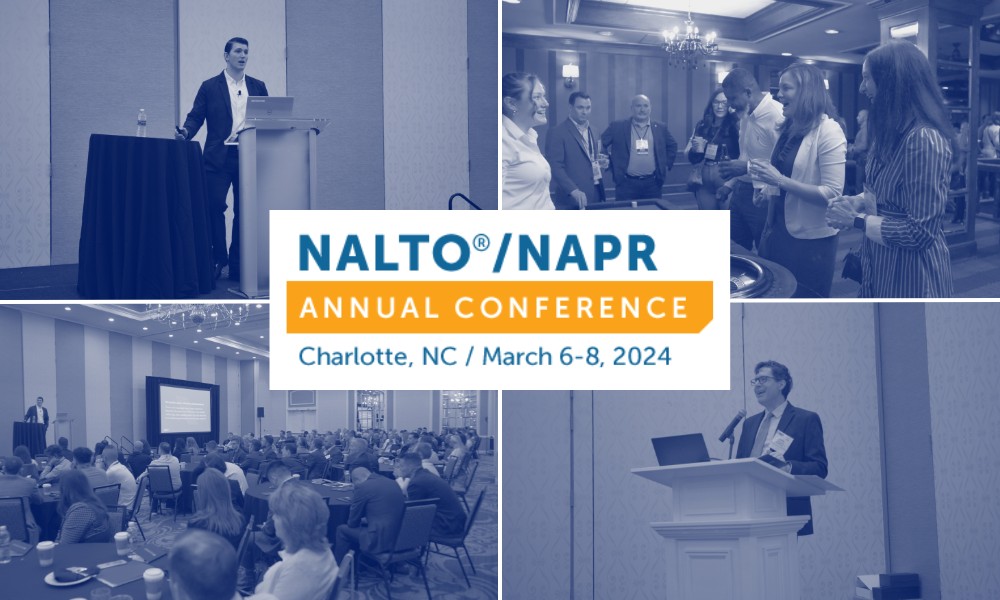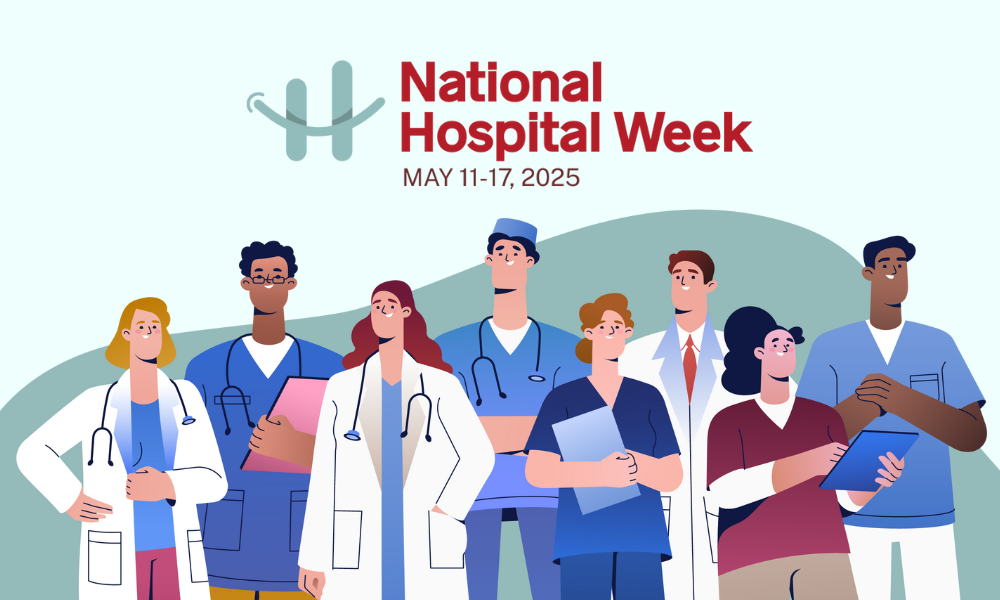The Queen City was abuzz last week as physician staffing pros flocked to the NALTO/NAPR Convention in Charlotte. This three-day event saw record attendance of more than 280 NALTO and NAPR members, sponsors, exhibitors, and providers. NALTO president Jarin Dana said it was the most attended event yet.
The event kicked off on Wednesday amid drizzly afternoon showers. Experts from around the country gathered to enjoy refreshments, beverages, and some lighthearted locum industry discussions around high-top bar tables or at one of the convention’s 35 exhibitor booths.
The stage was set for a jam-packed Day 2 examining the industry’s staffing challenges, from attracting and retaining physicians to accessing a company’s untapped potential to experiencing exponential growth. Locumpedia was there for every twist and turn, both as exhibitors and with our reporter caps on, ready to break it all down for you, our loyal readers (to echo Lady Whistledown of Bridgerton).
Keynote: The Physician Landscape Redefined
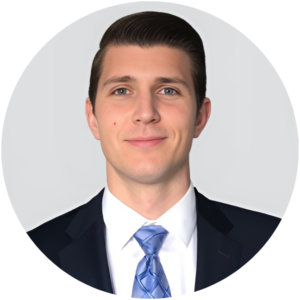 The convention’s keynote address began with a simple question that prompted a discussion between the providers, C-suite execs, and agency experts at each table. To kick off his keynote delivery, Daniel Kuzmanovich, of healthcare research firm Advisory Board, wanted to know the one word that best described the “state of the physician landscape in 2024.”
The convention’s keynote address began with a simple question that prompted a discussion between the providers, C-suite execs, and agency experts at each table. To kick off his keynote delivery, Daniel Kuzmanovich, of healthcare research firm Advisory Board, wanted to know the one word that best described the “state of the physician landscape in 2024.”
In a room full of 200-plus people who deal with physician staffing challenges daily, many terms were thrown out —tumultuous, shortage, dwindling, and opportunity (for the optimists in the room).
But Kuzmanovich’s word was “redefined.”
What he meant by this was multi-layered: staffing agencies who compete for top talent at both the facility and private practice level are in an “arms race” with potential new players, such as private equity firms or corporations like CVS, Amazon, Optum, etc. Kuzmanovich added that in this newly redefined physician landscape, docs become “embedded into these vertical ecosystems.” Even if they don’t exclusively work at one of the large healthcare retailers, they might still deal with them through contracts or partnerships.
He also said the physician shortage, burnout, and the introduction of new practice opportunities for providers in a healthcare-adjacent field have strained the healthcare system. He claimed that physicians now have more options and feel empowered to act on their “longstanding discontent” to change employers.
Advisory Board’s data reflects this longstanding discontent. According to the firm’s research, three factors are contributing the most to burnout and doctors considering leaving the profession:
- 61% say too many bureaucratic tasks had them looking for the door
- 38% said the lack of respect from their coworkers has caused them to explore other opportunities
- 37% blamed their burnout on too many work hours
“Your jobs have gotten harder,” Kuzmanovich said to the recruiters in the room. “But the redefined physician landscape means that while recruiters will face more headwinds, there will be even greater requests for your services.”
And burnout is only one piece of the pie, Kuzmanovich believes. Advisory Board also reported that 47% of active docs across all specialties are 55 or older and will retire within the next decade. The confluence of factors has created a “seller’s market” where doctors hold the cards. Physicians have become more vocal about what they want: a better quality of life, flexibility, autonomy, and a salary more reflective of their work. He also notes that the way society views jobs has changed as well. It’s not as common for a doctor to take a full-time job out of residency, work there for 25 years, and then retire.
“A couple of threads we need to pull together here are the ‘generational element’ and the ‘societal element’ of what practices look like now,” Kuzmanovich stated. “The culture we’re living in—across the board—people are more likely to move from one place to another. However, despite many in this room agreeing that doctors are not as loyal to their practices, turnover has not changed. It has hovered around the 6 to 7 to 8% range for years. The numbers considering changes have increased, but turnover has remained the same.”
“A couple of threads we need to pull together here are the ‘generational element’ and the ‘societal element’ of what practices look like now. The culture we’re living in—across the board—people are more likely to move from one place to another. However, despite many in this room agreeing that doctors are not as loyal to their practices, turnover has not changed. It has hovered around the 6 to 7 to 8% range for years. The numbers considering changes have increased, but turnover has remained the same.”
- Daniel Kuzmanovich
So, agencies and facilities can collaborate to reverse the “intent to leave.” Despite factors working against the staffing industry, agencies still have opportunities to capitalize on the moment and attract and retain doctors at their client facilities.
“Stability is no longer a concern for physicians,” Kuzmanovich said. “They want more money and flexibility, and if you can take care of their mental health, that’s great, too.”
Facilities need to be able to provide “meaningful autonomy,” ample time for physicians to do their work, and continuous support every step of the way. By addressing these problems, Kuzmanovich thinks healthcare systems can become employers of choice, and therefore, physicians will be more inclined to stay.
He says that by implementing simple changes and giving doctors time, support, and autonomy, it’s also possible to dramatically reduce the physician shortage altogether. According to the Association of American Medical Colleges, there’s an expected shortage of between 17,800 and 48,000 primary care providers and a specialist shortage of between 21,000 and 77,100 by 2034.
Kuzmanovich suggests that by improving physicians’ workflows, removing unnecessary bureaucratic tasks, and adapting to new technology like artificial intelligence, a shortage is not the foregone conclusion many experts would have us believe it is.
“If we change how medicine could be practiced, we could prevent a shortage in primary care,” he claims. But the only way this is possible is by giving each doc what they need to succeed: complete autonomy.
“Autonomy is a must-have,” Kuzmanovich stated. “Autonomy is where you make a difference by providing clinical autonomy, schedule autonomy, and then strategic autonomy, where physicians have a voice in strategic conversations. Autonomy is the currency today’s employers trade on.”
While the market favors physicians now more than ever, if the industry can adopt these changes, it will create greater opportunities for recruiters and facilities that understand what these providers want most in this new landscape.
Preparing A Locums Business For Growth
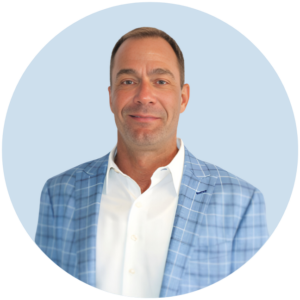 In one of the convention’s concurrent breakout sessions, Jeff Bowling, a partner at Four Piers Capital, founder of The Delta Companies and ex-CEO of Curative, explored ways to help businesses prepare their locum tenens agencies for growth. In a rapid-fire hour-long session, Bowling highlighted how firms he worked with scaled their operations and achieved remarkable success.
In one of the convention’s concurrent breakout sessions, Jeff Bowling, a partner at Four Piers Capital, founder of The Delta Companies and ex-CEO of Curative, explored ways to help businesses prepare their locum tenens agencies for growth. In a rapid-fire hour-long session, Bowling highlighted how firms he worked with scaled their operations and achieved remarkable success.
He said one of his biggest keys comes from zeroing in on a business’s vision early on because “the more focused you are, the better off your business is going to be.” Bowling claims this manifests itself in many ways. He started his discussion by talking about an agency he recently invested in that focused on two specific markets and how this allowed them to become experts at staffing in those areas.
“The alternative is just the relentless pursuit of low-hanging fruit,” Bowling says. “Focus is going to give you subject matter expertise.”
Bowling advises businesses not to be “opportunistic” when looking to expand their business, instead remaining on target and sticking to a business plan. Part of the plan includes a clearly defined organizational chart and budget. He says sticking to a business plan is about “balancing our profitability with how much we want to grow.”
When focusing on adding staff members to grow a team, Bowling says leadership needs to create the “ideal member profile,” with four or five attributes that align with what you want most out of a new hire. In his example, he used the following:
- Humility
- Drive
- Grit
- Smart
- Accomplished
Then, he says to create a set of hiring questions and a scorecard to ensure each candidate is qualified and aligns with your company’s values.
“We’re trying to make something like hiring as empirical as possible,” he stated. “If new hires don’t care most about what you care about, you will have problems.”
After finding employees who willingly buy into your company’s beliefs and values, Bowling says praising and rewarding them for being resilient, working hard, and buying into a company’s focus is essential. He says this is a two-way street, and leaders must be resilient and lead by example during difficult times. Resilience helps create an environment of trust and a culture people want to be a part of.
He encouraged everyone to become “frontline leaders” instead of working only in the background. Background leaders who focus on the big picture and frontline leaders who manage day-to-day operations need to agree with each other, Bowling adds. He says their disagreements are why businesses can’t scale properly.
“You should be able to get your money’s worth from a leader,” Bowling states. “Helping your team become proficient at a certain skill set takes time and requires instruction, direction, training, and development. The single biggest bottleneck for growth is not having a strong frontline leader.”
“You should be able to get your money’s worth from a leader. Helping your team become proficient at a certain skill set takes time and requires instruction, direction, training, and development. The single biggest bottleneck for growth is not having a strong frontline leader.”
- Jeff Bowling, KEYNOTE SPEAKER
Bowling says four pillars are required to build good leaders in the locum tenens space. Those four pillars are:
- Leaders have to be trustworthy.
- Leaders have to be good coaches.
- Leaders need to be accountable.
- Leaders need to have emotional intelligence.
“Do your leaders know what needs to be said in the moment?” Bowling asks. In his work, he’s helped businesses scale by engaging leaders in in-depth leadership development courses and relying on outside consultants and coaches to help implement hardline processes into each business. Bowling says investing in leadership helps companies get the most production out of those individuals, permeating the rest of a company from the top down.
Bowling also emphasized segmenting business operations to avoid taking on too much at any given time. This segmentation provides purpose and direction, and that focus pays off in dividends, as he said he saw in his own company.
“The segmentation made us more focused,” Bowling believes. “We had more focused communication. There was more ownership. This was a catalyst and a training system that said, ‘Hey, you got to do a better job communicating.’”
Bowling ended his discussion by inspiring leaders to back their teams fully. Putting these processes in place helps build the right team with clearly defined roles and clearly defined goals. So, it’s up to a leader to help each team member reach their full potential.
“Belief starts with you,” Bowling said, gesturing to the locums leaders in the room. A fish rots from the head down. I believe that most people are mostly good. You have to believe that people are capable of more than they thought was possible. That will require us to stretch people beyond ways they’ve ever been stretched before. Always believe in people no matter how things are going. You have to love people and believe in people if you want to grow your business.”
How State Healthcare Laws Apply to A Locums Business
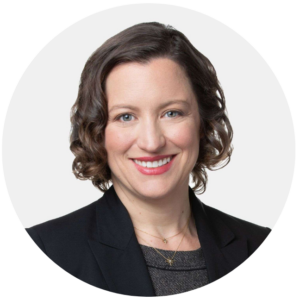 In an afternoon session on Day 2, attorneys Sarah Kroll-Rosenbaum and Montaye Sigmon of Akerman LLP provided a brief overview of some of the many state healthcare laws implemented over the past year that can have potential applications to the locum tenens staffing industry.
In an afternoon session on Day 2, attorneys Sarah Kroll-Rosenbaum and Montaye Sigmon of Akerman LLP provided a brief overview of some of the many state healthcare laws implemented over the past year that can have potential applications to the locum tenens staffing industry.
Akerman LLP partnered with NALTO in 2023 to compile an updated “State Health Care Staffing Laws Guide” for NALTO members. At the conference, they supplied each attendee with a spiral-bound copy of the guide. NALTO members can access the complete guide on the NALTO website under “Member Resources.”
 “We wanted to bring a holistic and synergistic approach across all healthcare staffing areas,” Kroll-Rosenbaum said. “I have a lot of experience defending class actions and complex litigation for staffing agencies. These laws are often written in ‘square peg/round hole’ English.”
“We wanted to bring a holistic and synergistic approach across all healthcare staffing areas,” Kroll-Rosenbaum said. “I have a lot of experience defending class actions and complex litigation for staffing agencies. These laws are often written in ‘square peg/round hole’ English.”
Kroll-Rosebaum said that while she and Sigmon are adept at interpreting these laws, they are “not encyclopedias” and that each agency should rely on their own representation’s advice. Kroll-Rosenbaum examined various laws that had changed in states, spending a chunk of time on the “Temporary Healthcare Services Agency Law” enacted in 2023 by New York. The law could apply to locum tenens agencies, requiring them to supply quarterly data of all contracted providers, and would come with steep penalty fees if that data isn’t submitted.
The staffing laws guide provides an overview of the enacted laws but is only to be used on an informational basis. Kroll-Rosenbaum and Sigmon emphasized that this should not be considered legal advice.
“We want to try to encourage each of you in your companies to think about compliance as a team sport,” Sigmon said. “There [are] some teeth to some of this that is scarier than the others, but with each of these, we recommend examining the potential consequences and weighing that in your evaluation on how to proceed.”
“We want to try to encourage each of you in your companies to think about compliance as a team sport. There [are] some teeth to some of this that is scarier than the others, but with each of these, we recommend examining the potential consequences and weighing that in your evaluation on how to proceed.”
- Montaye Sigmon, Akerman LLP
Highly Experienced Doctors on Why Providers Chose Locum Tenens
On the conference’s final day, attendees heard from three locum tenens providers who gave their perspectives on the locum tenens industry, recruitment, and their journey from full-time medicine to locum gigs.
 Dr. Andrew Wilner, a longtime friend of Locumpedia, Dr. Paul Hoehner, and Dr. Joshuae Gallardo sat on the panel Friday morning, answering questions about what drove them to pursue careers in medicine and eventually locum tenens.
Dr. Andrew Wilner, a longtime friend of Locumpedia, Dr. Paul Hoehner, and Dr. Joshuae Gallardo sat on the panel Friday morning, answering questions about what drove them to pursue careers in medicine and eventually locum tenens.
The physicians agreed there was never a time when they didn’t want to be doctors. But they also decided that they had other interests outside of medicine, such as writing, pursuing theology, or just wanting to maximize their impact in their communities beyond a singular role at a hospital. That’s why locum tenens presented a welcome break from their regular work schedule.
“Mid-career, I made a step to go into seminary to do more work in bioethics, and I just became enthralled with theology,” Dr. Hoehner said. “I negotiated part-time work, which worked for about a year, but before long, you end up working full-time for half the pay.
“After graduating, I made the step to do locums. Working half-time locums and half-time in my other career was a good deal. I had all the flexibility I needed to do both.”
Dr. Gallardo claimed to have had “Goldilocks Syndrome” everywhere he went to work early on in his career. He says he tried different avenues but couldn’t find the right fit.
“For me, it was a revelation when locums came around,” he mentions. ”I had the flexibility and then the ability to make an impact. When I first started as a locums doctor, you were a place filler, but then I found that in this work, I could be even more impactful than a perm physician.”
Dr. Wilner’s first locum job came in the early 1980s, and he says in those days, he wanted to do everything “100 percent.” He had a book he wanted to write, and he wanted to work as a doctor. He joked that locums gave him a way to find a “work-work” balance.
“All along the way, I’ve had locums and perm positions—in those days, it was called ‘moonlighting,’” Dr. Wilner said. “In the doctor world, you’re either there or you’re not there. If you are viewed as a part-time person, you don’t get the same respect as a full-time doctor. But as a ‘full-time, temp person,’ you got the advantage of being a full-time person while not having to be there all the time.”
The three docs answered questions about the qualities they each look for in a staffing agency, how they choose assignments, how agencies can improve a locum doc’s experience, and more. Stay tuned for the full story from this panel discussion next week!
“All along the way, I’ve had locums and perm positions—in those days, it was called ‘moonlighting. In the doctor world, you’re either there or you’re not there. If you are viewed as a part-time person, you don’t get the same respect as a full-time doctor. But as a ‘full-time, temp person,’ you got the advantage of being a full-time person while not having to be there all the time.”
- Dr. Andrew Wilner
Building Collaborative Relationships
Outside the panel discussions, the NALTO/NAPR Convention offered growth opportunities, learning, and networking, from engaging in roundtable discussions and dissecting the latest and greatest issues affecting our staffing sector. Conventions like these serve as a valuable meeting ground for exhibitors like us to interact face-to-face and build collaborative relationships within the locum tenens community.
Thursday evening’s “Casino Night” social event also brought us together in a different light. Employing our best poker faces, blackjack tricks, or leaving it up to chance at the roulette table, we all indulged in a bit of risk-taking—albeit with house money. These events encourage a spirit of camaraderie that we look for in this industry, strengthening existing connections and paving the way for new ones.
We’ll all eagerly anticipate next year’s gathering in Austin, Texas—details to be named much later—with an even greater appreciation for the industry we know and love.


